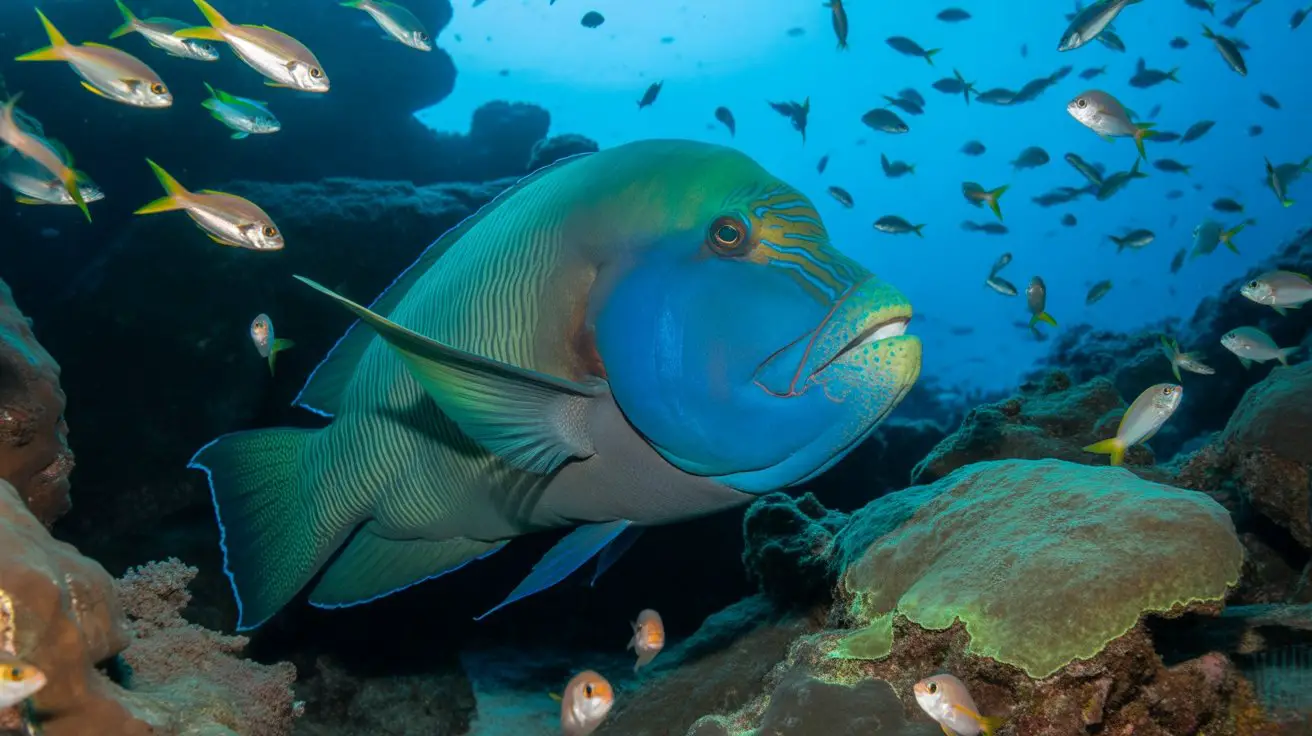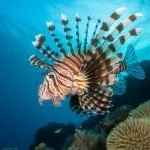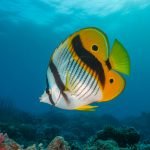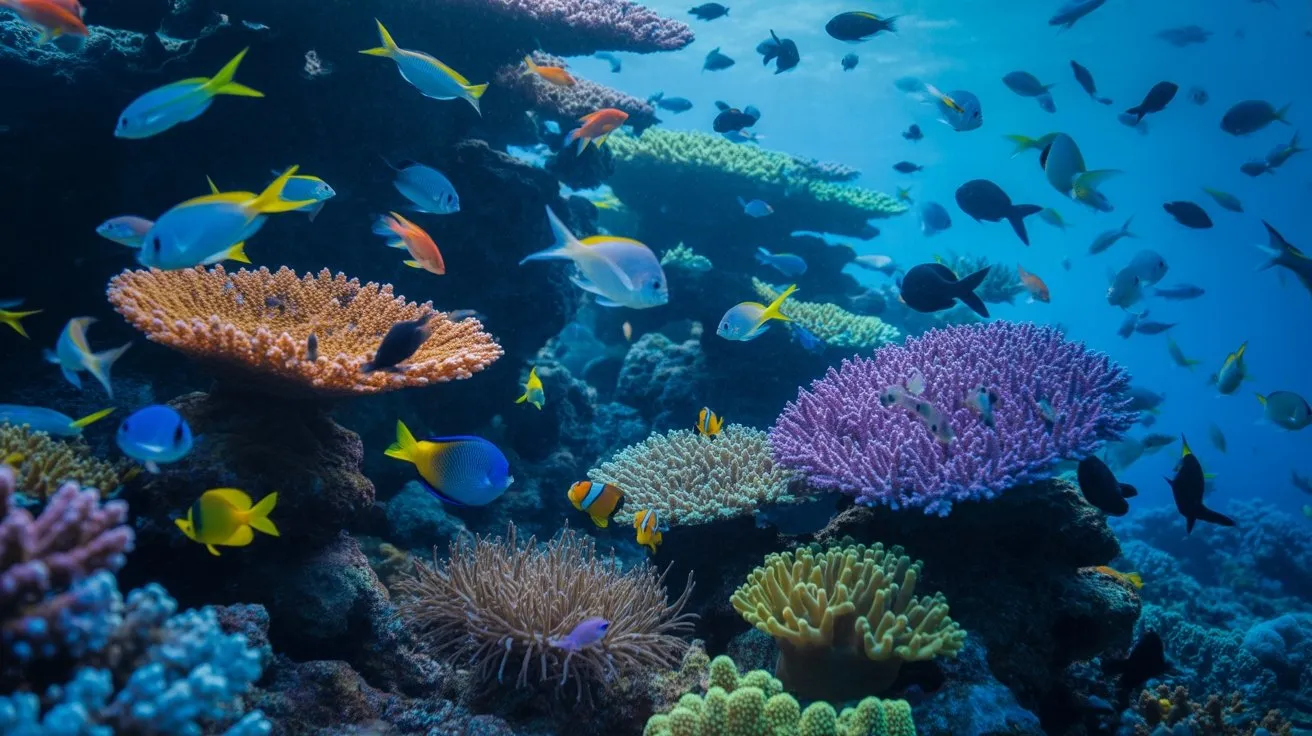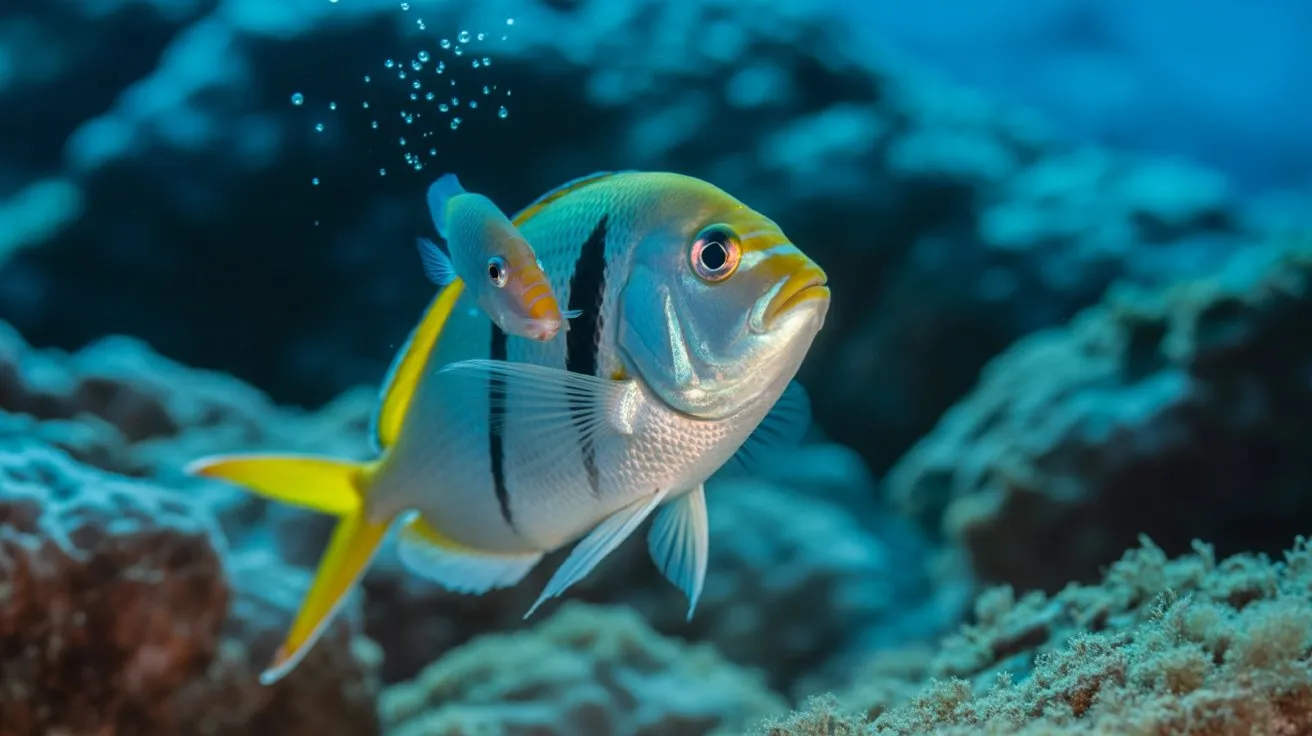You’ve likely never encountered a fish that can grow to exceed 2.3 meters and weigh over 190 kilograms, yet the Napoleon wrasse (*Cheilinus undulatus*) achieves these remarkable dimensions in Indo-Pacific coral reefs. You’ll recognize this species by its distinctive nuchal hump and vibrant blue-green coloration, but what you might not realize is how this apex predator’s feeding behavior fundamentally alters entire reef ecosystems—and why its current conservation status threatens marine biodiversity across multiple ocean basins.
Physical Characteristics and Distinctive Features
Five distinct morphological features distinguish the Napoleon wrasse (Cheilinus undulatus) from other reef fish species.
You’ll observe the prominent nuchal hump that develops on males’ foreheads, reaching maximum prominence at sexual maturity around 9-10 years.
You’ll notice their impressive size potential—individuals can exceed 2 meters in length and weigh over 190 kilograms, making them the largest reef-dwelling wrasse.
You’ll identify them by their thick, fleshy lips and protruding canine teeth designed for crushing hard-shelled prey.
Their coloration shifts from bright green juveniles to blue-green adults with intricate facial markings resembling Napoleon’s hat.
You’ll recognize their distinctive swimming pattern—slow, undulating movements using pectoral fins rather than typical tail propulsion.
Habitat and Geographic Distribution
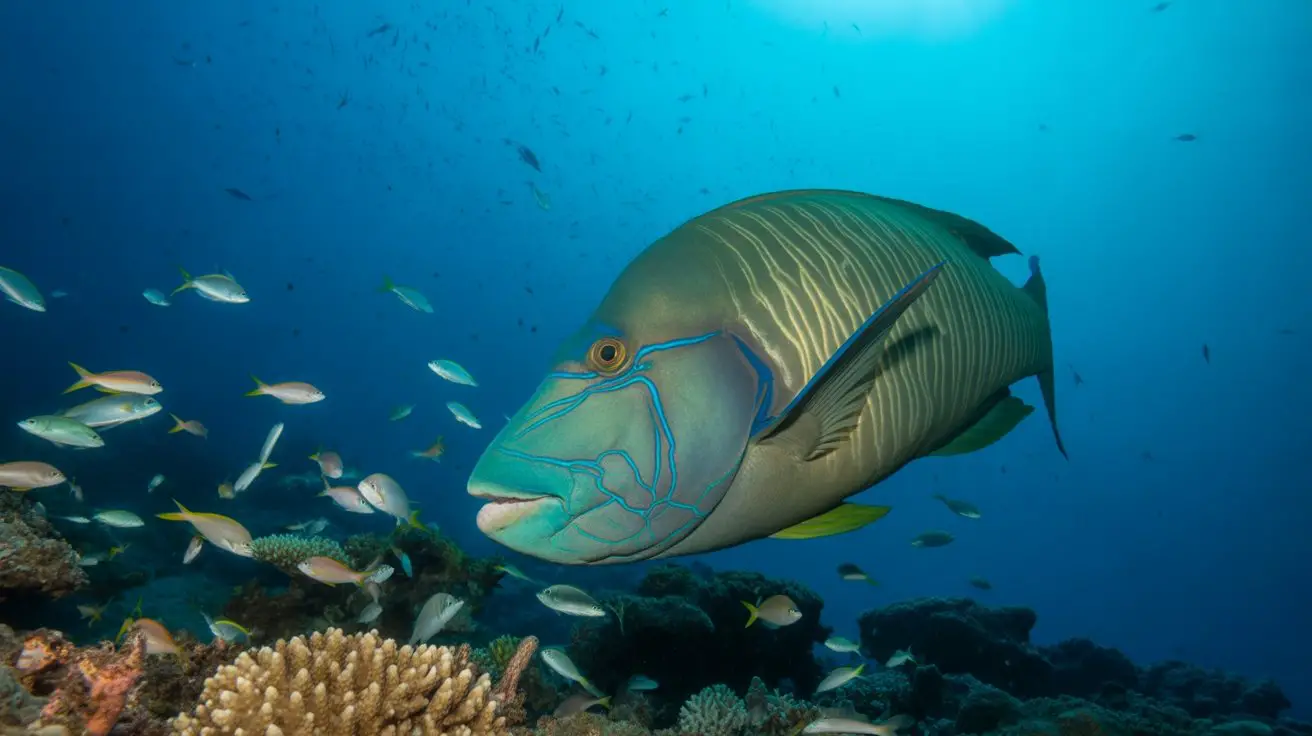
Spanning the tropical waters of the Indo-Pacific region, Napoleon wrasse inhabit coral reef ecosystems from the Red Sea eastward to the Pacific islands of Vanuatu and New Caledonia.
You’ll find these massive fish occupying depths ranging from 1 to 100 meters, though they’re most commonly observed between 3-30 meters. They prefer outer reef slopes, lagoons, and steep drop-offs where coral formations provide adequate shelter and feeding opportunities.
Population density varies markedly across their range, with higher concentrations documented in protected marine areas.
You’ll notice they favor locations with strong current flows that deliver planktonic prey. Their distribution has contracted substantially due to overfishing pressure, particularly in Southeast Asian waters.
Critical spawning aggregation sites occur in specific locations including Palau, the Great Barrier Reef, and various Pacific atolls during lunar cycles. Additionally, the health of their populations is closely tied to the preservation of coral reefs, which provide vital habitats and food sources.
Diet and Feeding Behavior
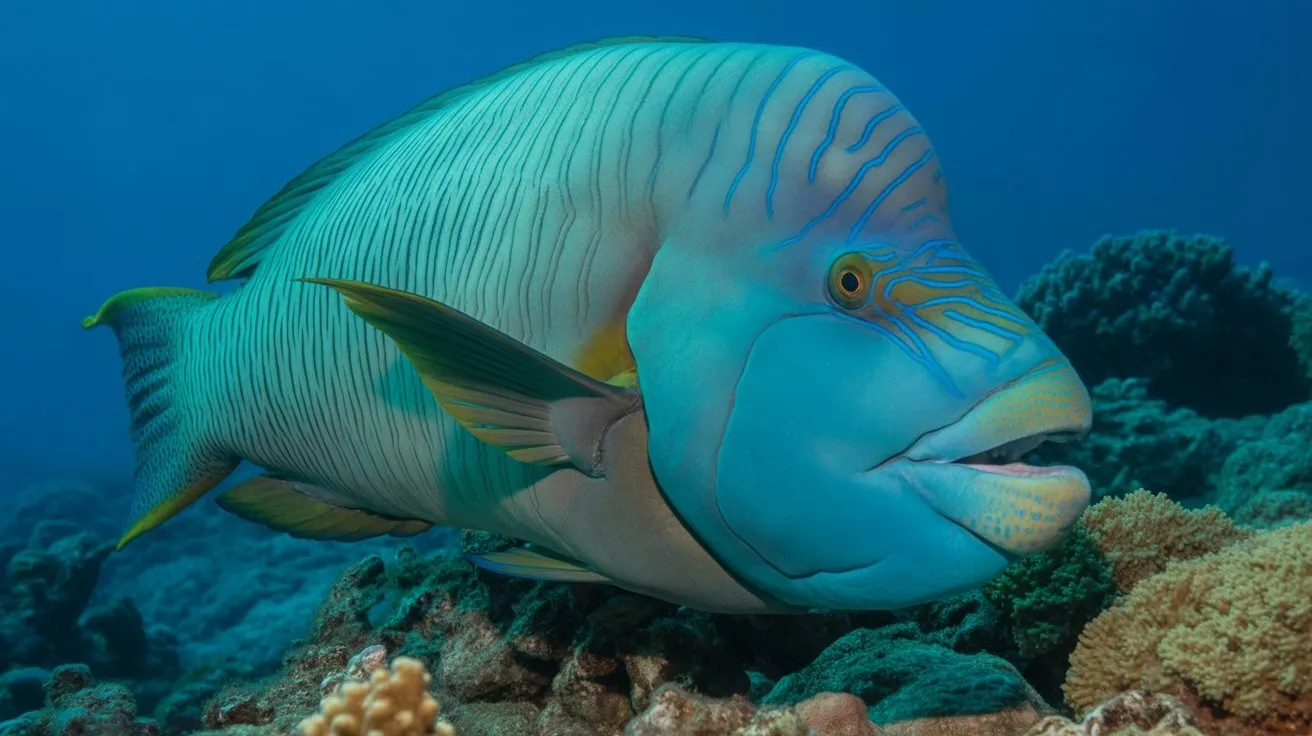
As opportunistic predators, Napoleon wrasse exhibit complex feeding behaviors that adapt to their reef environment’s dynamic prey availability.
You’ll observe these fish employing powerful pharyngeal jaws to crush hard-shelled invertebrates, including mollusks, crustaceans, and echinoderms. Their feeding strategy targets crown-of-thorns starfish, making them essential biocontrol agents on coral reefs.
You’ll notice their hunting patterns shift throughout the day. Morning foraging focuses on benthic invertebrates, while afternoon activity targets mobile prey like small fish and cephalopods.
Their protrusible mouths create powerful suction, enabling extraction of prey from crevices.
Juvenile Napoleon wrasse demonstrate different dietary preferences, primarily consuming small crustaceans and polychaete worms.
As they mature, you’ll see their diet expand to include larger prey items, reflecting their increasing jaw strength and hunting capabilities. Additionally, their role as keystone species highlights their importance in maintaining the health of coral reef ecosystems.
Life Cycle and Reproduction

When Napoleon wrasse reach sexual maturity between 5-7 years of age, they initiate one of the reef’s most remarkable reproductive strategies through protogynous hermaphroditism.
You’ll observe females evolving into males when population dynamics require it, typically after reaching 50-70cm length. During spawning aggregations from May to July, you’ll witness dominant males establishing territories and courting multiple females through elaborate displays.
You’ll find spawning occurs at reef drop-offs during new moon phases, where pairs release gametes into strong currents.
Females produce 15,000-90,000 pelagic eggs depending on size. You’ll note larvae drift for 50-60 days before settling on coral reefs.
Juveniles exhibit cryptic coloration, hiding in coral crevices until reaching 15-20cm. This extended development period makes populations particularly vulnerable to overfishing pressure.
Ecological Role in Coral Reef Ecosystems

Throughout coral reef ecosystems, Napoleon wrasse function as apex predators that regulate populations of crown-of-thorns starfish, toxic sea urchins, and large mollusks. You’ll observe these fish consuming Acanthaster planci starfish at rates of 2-3 individuals per day, preventing coral decimation events. Their powerful pharyngeal jaws crush Diadema setosum spines and Tridacna shells exceeding 30cm diameter. When you examine reef health metrics, areas with established Napoleon wrasse populations show 40% higher coral coverage compared to depleted zones. They’re maintaining trophic balance through selective predation on corallivorous species. You’ll find their grazing pressure creates spatial heterogeneity, promoting recruitment of juvenile coral polyps. Their absence triggers cascading effects: urchin population explosions, algal overgrowth, and subsequent coral mortality rates exceeding 60% annually. Additionally, coral reefs serve as critical habitats that sustain various marine species, enhancing the ecological role of the Napoleon wrasse within these vibrant ecosystems.
Threats and Population Decline
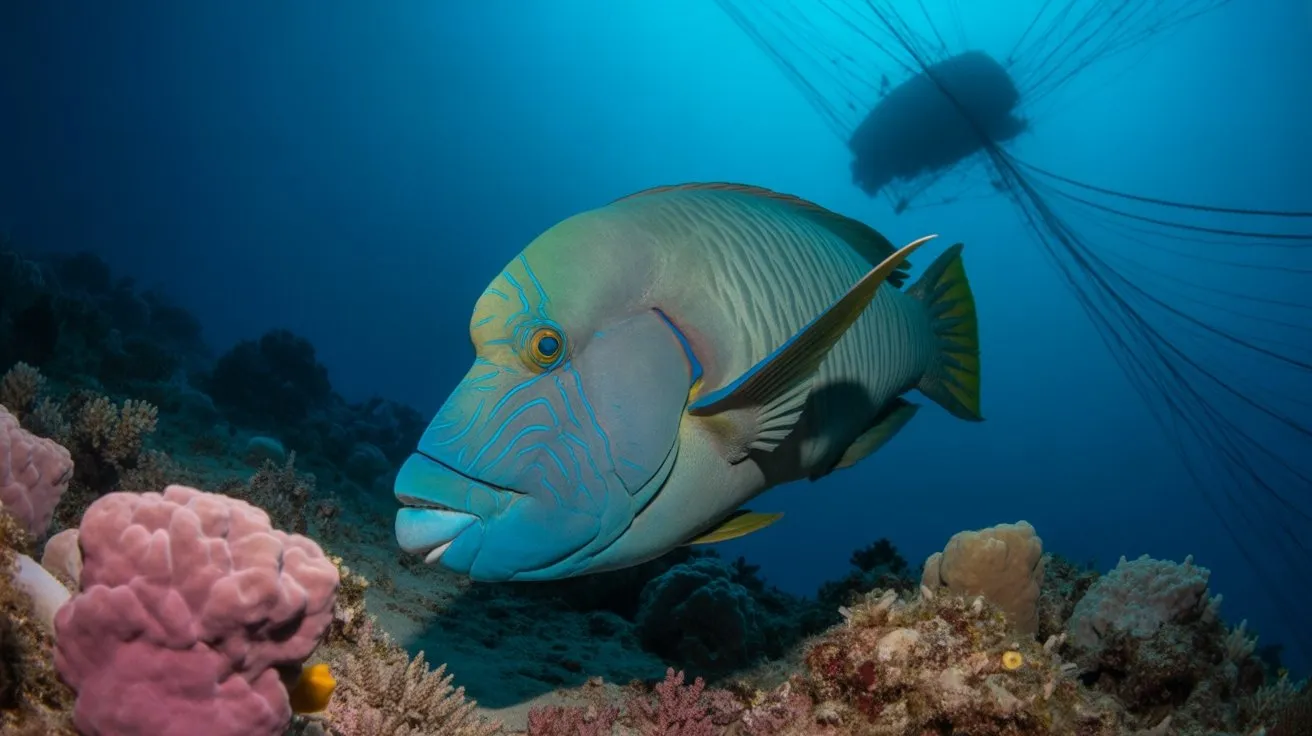
Despite their essential ecological function, Napoleon wrasse populations have declined by 80-90% across their Indo-Pacific range since the 1980s.
You’ll find overfishing represents the primary threat, driven by high market demand in Southeast Asian live reef fish trade. Commercial fishers target spawning aggregations, removing sexually mature individuals before reproduction occurs. Cyanide fishing techniques used for live capture cause additional mortality rates of 40-60%.
You’re observing habitat degradation as coral reef systems experience bleaching events, coastal development, and sedimentation.
Climate change compounds these pressures through ocean acidification and rising sea temperatures. Juvenile recruitment rates can’t compensate for adult mortality, creating population bottlenecks. Overfishing threatens entire marine ecosystems, underscoring the urgency for conservation efforts.
Current CITES Appendix II listings provide limited protection, as enforcement remains inadequate across fragmented territorial waters where these fish migrate.
Conservation Status and Protection Efforts
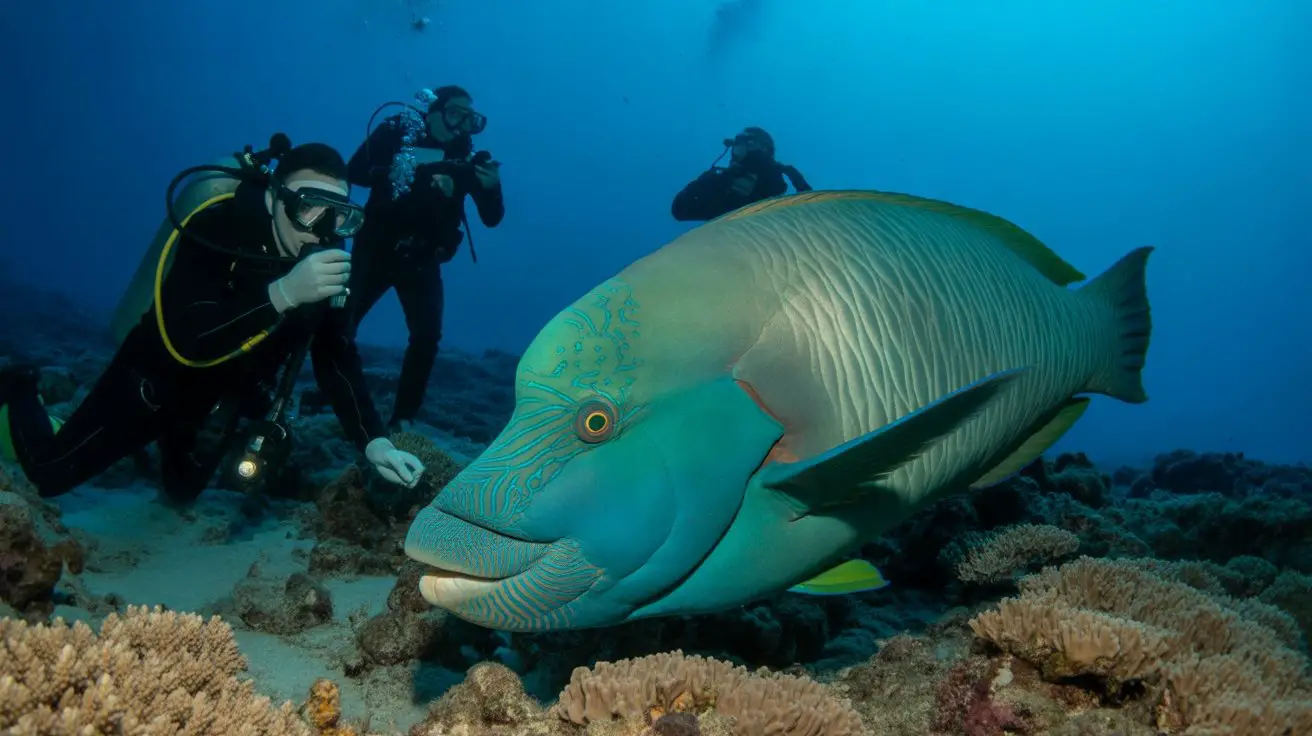
Given the precipitous population decline, you’ll find the Napoleon wrasse received CITES Appendix II protection in 2004, requiring export permits and trade monitoring across its range.
You’ll observe that several nations have implemented stringent fishing restrictions, with complete harvest bans in Australia’s Great Barrier Reef Marine Park and selective no-take zones throughout Southeast Asia.
You’ll notice marine protected areas (MPAs) cover approximately 30% of critical Napoleon wrasse habitat, though enforcement remains inconsistent.
Conservation programs focus on juvenile recruitment monitoring, with tagging studies revealing 15-year generation times that complicate recovery projections.
You’ll see aquaculture initiatives attempting captive breeding, but complex larval requirements have limited success rates to under 5% survival through metamorphosis, highlighting the species’ continued vulnerability.
Furthermore, marine protected areas play a crucial role in providing safe habitats for the Napoleon wrasse, aiding in its conservation.
How You Can Help Protect Napoleon Wrasse
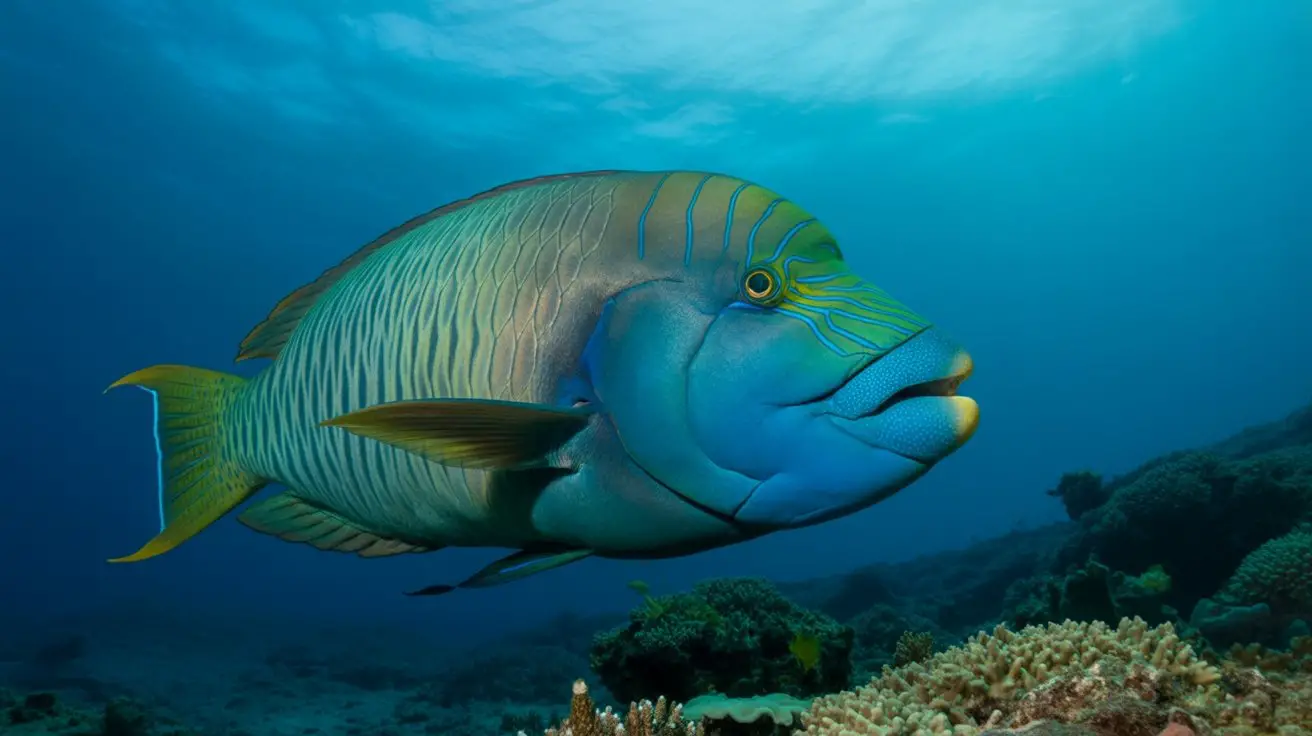
While individual actions might seem insignificant against large-scale commercial pressures, you can contribute meaningfully to Napoleon wrasse conservation through targeted consumer choices and advocacy efforts.
Avoid purchasing live reef fish from restaurants, particularly in Southeast Asia where Cheilinus undulatus remains commercially available. Support sustainable seafood certification programs like MSC when selecting marine protein sources.
Donate to organizations conducting field research on humphead wrasse populations, as critical data gaps persist regarding juvenile recruitment rates and spawning aggregation sites.
Choose reef-safe sunscreens containing zinc oxide rather than oxybenzone, which damages coral habitats essential for wrasse survival.
Report illegal fishing activities to local authorities when snorkeling or diving, and educate others about CITES Appendix II protections governing international trade regulations. Additionally, understanding the importance of sustainable seafood can empower consumers to make choices that protect vulnerable species like the Napoleon wrasse.
Conclusion
You’ve witnessed how the Napoleon wrasse acts as a living barometer of reef ecosystem health. When you make sustainable seafood choices and support marine protected areas, you’re directly influencing population recovery rates. Current data shows less than 10% of original biomass remains in heavily fished regions. Your conservation actions create ripple effects through trophic cascades, maintaining coral reef biodiversity indices. Each decision you make contributes to measurable conservation outcomes for this critically endangered species.
